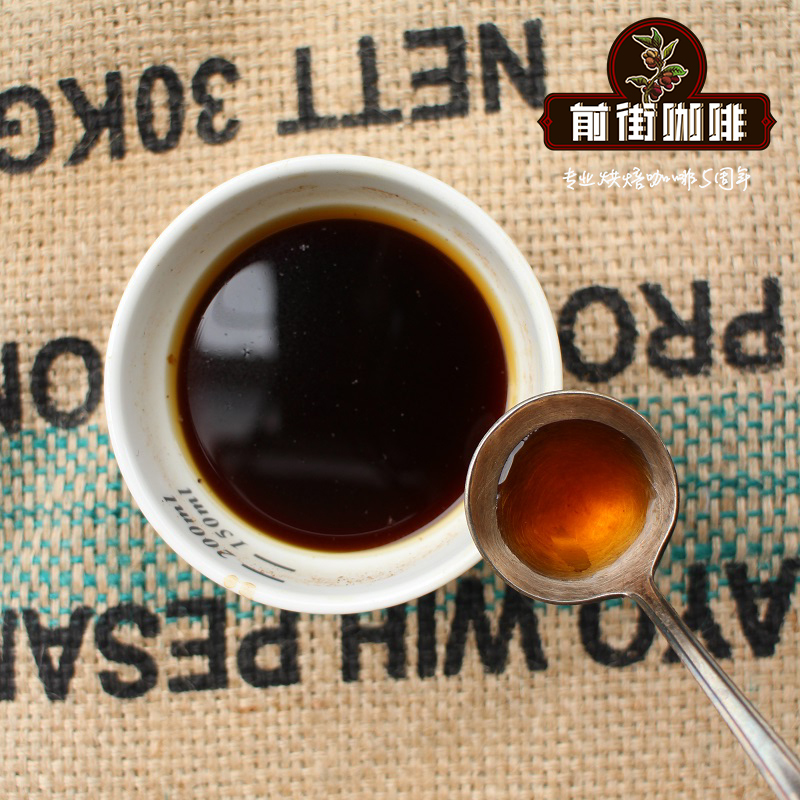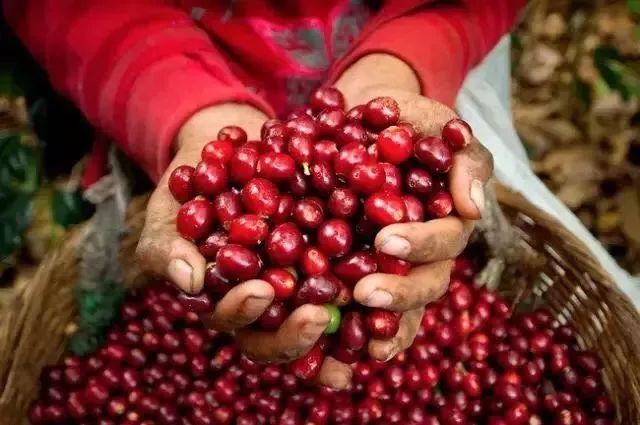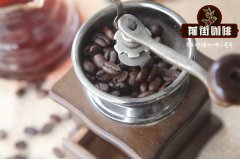Ethiopian Coffee Bean Story _ Essel Coffee Bean characteristics and Flavor introduction _ Ethiopian Coffee Bean Price

Professional coffee knowledge exchange more coffee bean information please follow the coffee workshop (Wechat official account cafe_style)
Fragrant coffee is one of the indispensable mental drinks for modern urbanites, ranking fifth in the coffee bean producing country, Ethiopia in East Africa, and the birthplace of the native varieties of Arabica coffee beans (Coffea Arabica) that are popular all over the world, so it is not too much to say that Ethiopia is the root of the world's coffee. If you love coffee, how can you not come to the pilgrimage?
Ethiopia exports at least 200,000 tons of coffee beans every year, and the production areas include the familiar Yirgachefe and Sidamo. The local coffee bean growing areas are mostly located in the Kaffa area in SNNPRS (Southern Nations, Nationalities and Peoples Regional State) in the southwest, with a total coffee planting area of about 10,600 square kilometers. Since many people think that coffee beans originated in Bonga, a hundred kilometers south of the southern city of Jimma, I took advantage of it. During his visit to Ethiopia, he specially came here to learn more about the situation.
At the first stop, I was the first to visit coffee farmers. It turns out that the local coffee farming model can be divided into three major categories: the first type is forest type, that is, wild and unattended; the second type is garden type, which has little yield and is guarded by farmers; and the third type is large-scale farming, designed to serve large-scale coffee merchants. At present, about 90% of the local coffee agriculture is garden-style. For example, a small farmer I visited in Bonga is taken care of by the person in charge, Samuane, and four other young workers, who are responsible for weeding, collecting mature coffee beans, and drying coffee beans every day. Samuane said that his farm can collect an average of 30 kilograms of coffee beans a day when he is busy, after about two weeks of drying process. Dried coffee beans can be sold to intermediaries and resold for export.
As many as 5, 000 wild coffee bean varieties have been found in the Kaffa region forest in southern Ethiopia, and in 2011, the local area was selected as the Kafa Biosphere Reserve Coffee Ecological Reserve by the United Nations Educational, Scientific and Cultural Organization, making it one of the 34 biodiversity conservation areas in the world. However, as early as 2006, Nabu from Germany, a non-profit organization specializing in nature and biodiversity, has set up a branch in Bonga to help local farmers protect the forest coffee area from the destruction of precious native coffee forests due to excessive reclamation and logging. Today, Nabu is still the most important communication bridge for coffee farmers. Coffee farmers are often encouraged to exchange experience and technology through exchange activities, and they are even educated to operate the "semi-forest" coffee tree planting method, that is, to cultivate coffee trees outside the primeval forest and take care of and harvest them regularly. On the one hand, it can ensure production without damaging the natural ecology.
According to the person in charge of Nabu, the challenges faced by coffee farmers in Ethiopia also include climate change. In the face of the increasingly extreme weather, which brings poor harvests and directly affects farmers' livelihood, Nabu has been committed to promoting environmental tourism in recent years, hoping to seek more financial support for farmers. Visitors can go deep into the jungle to explore and learn more about wild coffee beans through forest excursions and guided tours. When I was looking for wild coffee trees in the local primeval forest, I found that I knew more about the fruit.
On this trip, in addition to visiting the coffee garden, knowing the history of coffee and tasting authentic coffee, I also had the opportunity to participate in the local traditional coffee ceremony (Coffee Ceremony), a popular local social activity in which the residents invited friends to their homes for coffee, and the hostess was responsible for brewing it. She first laid grass on the ground to make a green mat, put a small coffee table on it, and put the cup and coffee pot on the table. Next to the table? The clay kettle Jebena boils hot water. In addition, the coffee beans are cooked impromptu with an iron plate and open fire. It is said that the coffee beans have to be stir-fried until they are very deep black. Then the coffee beans are ground into powder by hand mill, poured into Jebena and boiled. Finally, the strong black coffee Buna is poured into a round cup for people to taste. Traditionally, they will make three cups of coffee to entertain their relatives and friends, and chat with each other in the process, very enjoyable.
When I was in Jimma and Bonga, I tasted Buna in restaurants and hotels respectively. I found that the Ethiopian coffee I usually drink in Hong Kong was relatively elegant and light, but Buna had a strong sweet and bitter taste and felt completely different. But then I came to understand that coffee is just a social drink for the local people, and its taste is less important than the meaning of making friends.
Essel coffee bean brand recommendation
Qianjie Coffee freshly roasted single Essel beans-such as Yega Sheffield and Sidamo Coffee are fully guaranteed in brand and quality and are suitable for brewing in a variety of utensils. And more importantly, the performance-to-price ratio is extremely high, a bag of half a pound 227 grams, the price is only 70-90 yuan. According to the calculation of 200ml per cup of coffee and the ratio of powder to water at 1:15, 15 cups of fine coffee can be made in a bag, and each cup of coffee only costs about 5 or 6 yuan, which is very cost-effective for cafes to sell dozens of yuan a cup.
Qianjie coffee: Guangzhou bakery, the store is small but a variety of beans, you can find a variety of unknown beans, but also provide online store services. Https://shop104210103.taobao.com
Important Notice :
前街咖啡 FrontStreet Coffee has moved to new addredd:
FrontStreet Coffee Address: 315,Donghua East Road,GuangZhou
Tel:020 38364473
- Prev

Rich flower and fruit fragrance in Antigua producing area Laminita Manor Flower God
Professional coffee knowledge exchange more coffee bean information please follow the coffee workshop (Wechat official account cafe_style) Guatemala Antigua Guatemala Antigua Flower God (Guatemala La Minita La Folie) production area: Antigua (Antigua) Fire Mountain Manor: la Minita (La Minita) Export: products of La Minita Group
- Next

Comparison of characteristics and flavors in Ethiopian Coffee producing areas _ how much is a pack of Ethiopian coffee beans
Professional coffee knowledge exchange more coffee bean information please follow the coffee workshop (Wechat official account cafe_style) Ethiopia is the hometown of Arabica coffee, it is in the forests of the Kaffa region that you can see wild Arabica coffee. In Ethiopian, coffee is called Bun or Buna, and coffee beans (coffeebean) may be from Ka
Related
- Detailed explanation of Jadeite planting Land in Panamanian Jadeite Manor introduction to the grading system of Jadeite competitive bidding, Red bid, Green bid and Rose Summer
- Story of Coffee planting in Brenka region of Costa Rica Stonehenge Manor anaerobic heavy honey treatment of flavor mouth
- What's on the barrel of Blue Mountain Coffee beans?
- Can American coffee also pull flowers? How to use hot American style to pull out a good-looking pattern?
- Can you make a cold extract with coffee beans? What is the right proportion for cold-extracted coffee formula?
- Indonesian PWN Gold Mandrine Coffee Origin Features Flavor How to Chong? Mandolin coffee is American.
- A brief introduction to the flavor characteristics of Brazilian yellow bourbon coffee beans
- What is the effect of different water quality on the flavor of cold-extracted coffee? What kind of water is best for brewing coffee?
- Why do you think of Rose Summer whenever you mention Panamanian coffee?
- Introduction to the characteristics of authentic blue mountain coffee bean producing areas? What is the CIB Coffee Authority in Jamaica?

